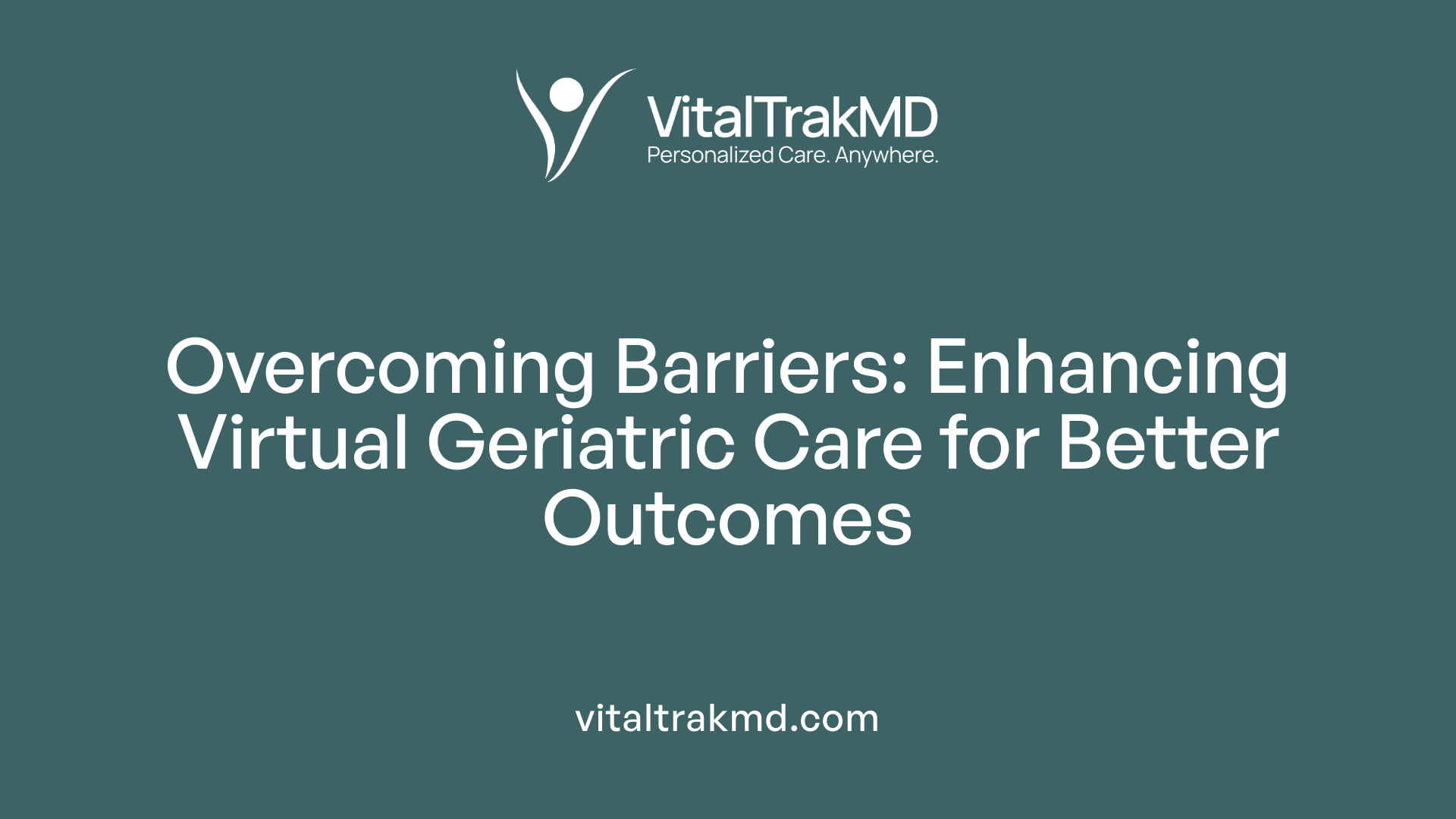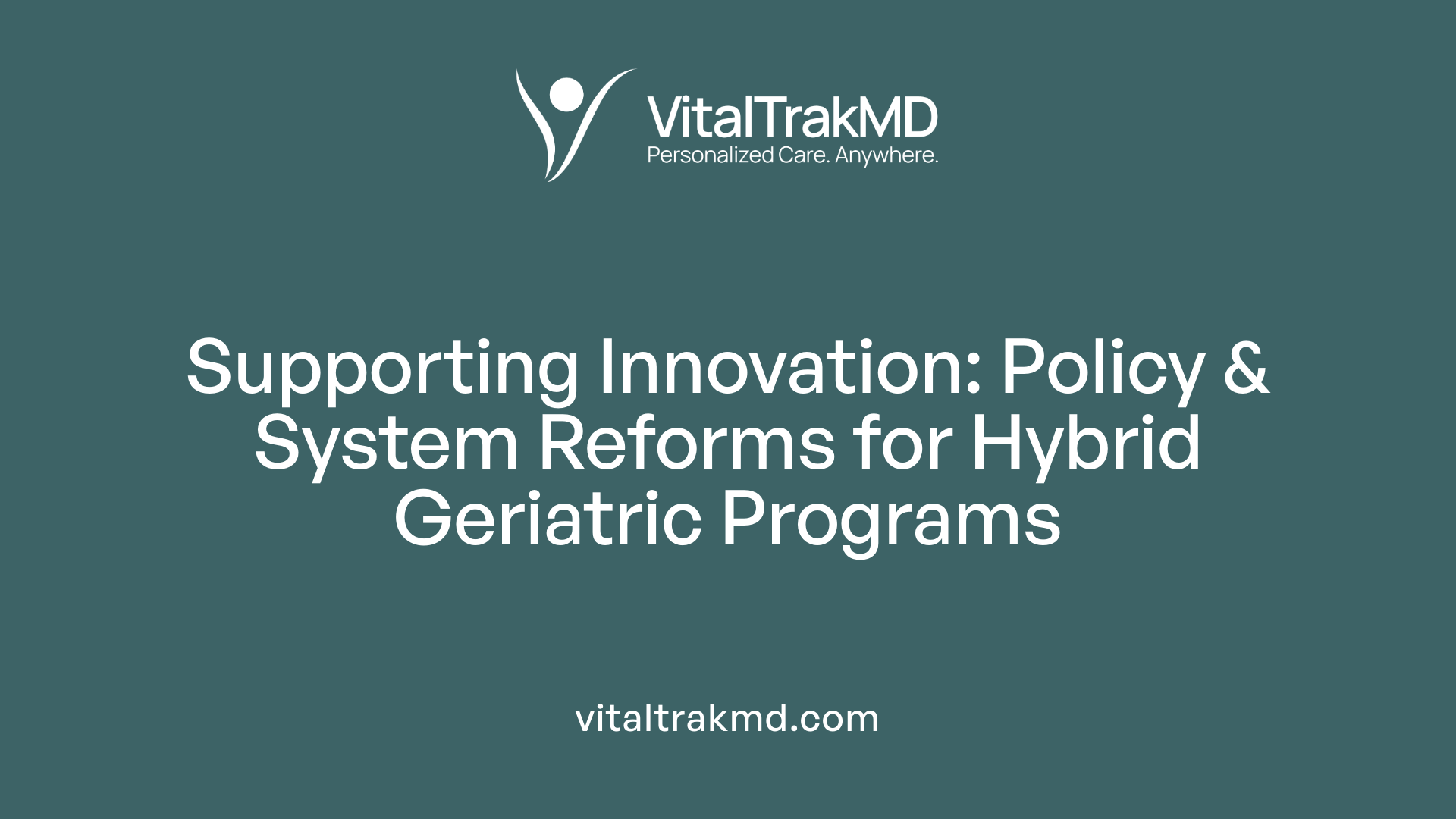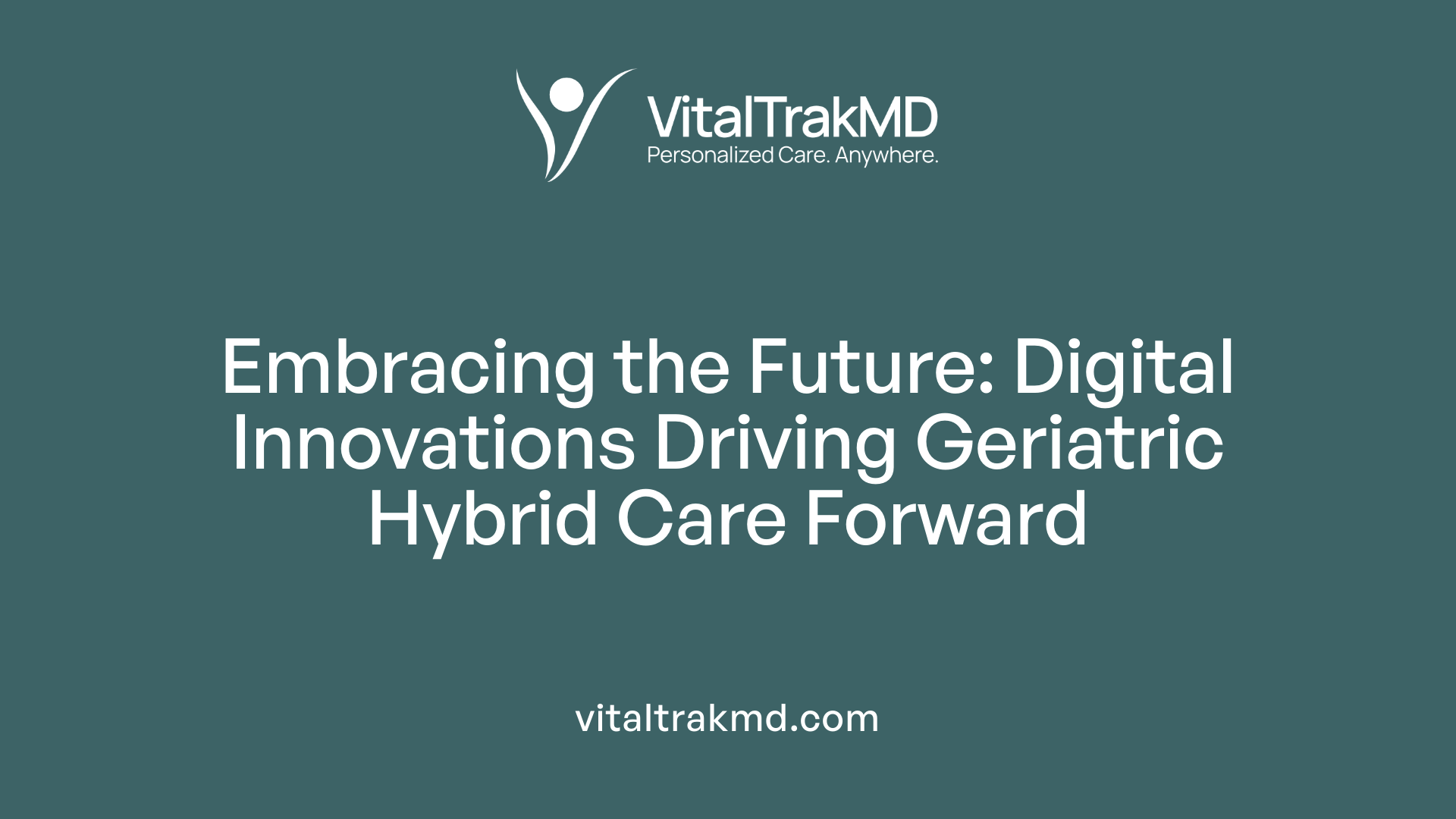Developments in Geriatric Wellness Programs Using Hybrid Care

Revolutionizing Geriatric Wellness with Technology and Multidisciplinary Strategies
Recent developments in geriatric wellness programs have harnessed the power of hybrid care models—integrating telehealth, virtual home visits, and in-person services—to deliver comprehensive, accessible, and person-centered care. These innovations are reshaping how healthcare providers address the complex needs of older adults, particularly those in remote or underserved areas, by combining the strengths of traditional and digital health interventions. This article explores the evolution, implementation, and impact of hybrid care approaches in geriatric health, highlighting exemplary programs, technological advances, policy support, and future directions.
The Emergence of Hybrid Geriatric Care Models
 Recent advancements in geriatric wellness programs highlight the growing use of hybrid care models that blend virtual and in-person services. Initiatives like VA-GRACE and Cleveland Clinic's partnership with Cuyahoga County APS demonstrate how integrating telehealth with traditional home visits enhances comprehensive evaluations for older adults. These programs leverage technologies such as telehealth stethoscopes, electronic tablets, and remote monitoring devices, facilitating high-quality assessments even in remote or underserved areas.
Recent advancements in geriatric wellness programs highlight the growing use of hybrid care models that blend virtual and in-person services. Initiatives like VA-GRACE and Cleveland Clinic's partnership with Cuyahoga County APS demonstrate how integrating telehealth with traditional home visits enhances comprehensive evaluations for older adults. These programs leverage technologies such as telehealth stethoscopes, electronic tablets, and remote monitoring devices, facilitating high-quality assessments even in remote or underserved areas.
Development of these programs involves careful planning to address challenges like poor internet connectivity, virtual physical exam adaptations, and team integration. For example, the VA's TeleGRACE program employs telehealth technicians who travel to patients' homes, connecting remotely with multidisciplinary teams. Equipment modifications, staff training, and safety protocols are crucial to ensure effective and safe evaluations.
This innovative approach not only expands access for high-risk, community-dwelling seniors but also supports timely interventions such as wound care, medication management, and emergency detection. Case examples have demonstrated improved health outcomes and patient satisfaction, indicating the promising future of hybrid geriatric care models.
| Program | Main Components | Challenges Addressed | Solutions Implemented |
|---|---|---|---|
| VA-GRACE | Multidisciplinary home evals with virtual team | Connectivity, physical exams, team logistics | Equipment upgrades, staff training, safety protocols |
| Cleveland Clinic | Virtual evaluations for at-risk elders | Access, safety, assessment adaptation | Remote patient environment evaluation, caregiver engagement |
| TeleGRACE | Home visits with remote multidisciplinary support | Connectivity, physical exam, safety | Multiple devices, protocol modifications |
Most programs emphasize iterative development, incorporating team feedback, and case studies to optimize the model. Overall, hybrid-virtual home visit programs are proving feasible and effective at extending geriatric care beyond traditional settings, ensuring high-risk seniors receive timely and comprehensive support.
Overcoming Challenges in Hybrid Geriatric Care
 Integrating telehealth, virtual visits, and traditional in-person services presents both opportunities and hurdles in geriatric programs.
Integrating telehealth, virtual visits, and traditional in-person services presents both opportunities and hurdles in geriatric programs.
A primary challenge is ensuring reliable telehealth connectivity. Rural areas often experience poor internet service, hindering seamless virtual consultations. To address this, programs have employed multiple devices connected through different carriers, improving overall connection stability. Technical barriers such as hearing impairments and limited digital literacy among older adults also pose obstacles. Solutions include using specialized remote examination tools like telehealth stethoscopes and headphones, and providing tailored training for patients and staff.
Adapting physical examination protocols for virtual settings is another vital aspect. Virtual physical exams require modifications, such as instructing caregivers to assist or leveraging remote monitoring devices for vital signs and other assessments. Protocol development focused on safety precautions, including emergency response plans during home visits, helps mitigate risks.
Staff training and effective team collaboration are essential for smooth hybrid care delivery. Teams undergo iterative training sessions to familiarize themselves with new equipment and procedures. Clear role definitions and regular team reflections foster better coordination, ensuring patients receive comprehensive care.
Addressing sensory impairments and varying levels of digital literacy among older adults remains crucial. Many patients experience hearing or vision challenges that can reduce engagement with telehealth platforms. Incorporating caregiver support, using larger screens or assistive features, and designing user-friendly interfaces facilitate better participation.
Emerging strategies in hybrid geriatric care include deploying unobtrusive sensors and remote monitoring devices that help detect health issues early. Mobile health applications and AI-driven analytics support proactive management, especially in aging-in-place scenarios. Continuous technological improvements, coupled with a focus on usability and safety, are vital in overcoming current barriers and enhancing care outcomes.
Overall, the successful integration of technological adaptations and strategic planning allows healthcare providers to extend accessible, patient-centered geriatric care beyond traditional settings, ultimately supporting healthier aging in diverse environments.
Policy and System-Level Support for Hybrid Geriatric Programs
 The widespread adoption of hybrid geriatric programs calls for targeted policy and health system reforms. Funding strategies should include incentivized reimbursement policies that support telehealth and digital health services, making innovative care models financially sustainable. Regulations need to keep pace with technological advancements by establishing standards for telehealth delivery, data privacy, and digital health insurance coverage, such as hybrid long-term care plans.
The widespread adoption of hybrid geriatric programs calls for targeted policy and health system reforms. Funding strategies should include incentivized reimbursement policies that support telehealth and digital health services, making innovative care models financially sustainable. Regulations need to keep pace with technological advancements by establishing standards for telehealth delivery, data privacy, and digital health insurance coverage, such as hybrid long-term care plans.
Collaboration among policymakers, insurers, and healthcare providers is crucial to creating an integrated system that promotes innovation and ensures healthcare equity. Engaging multiple stakeholders helps develop reimbursement models that recognize hybrid services, encourages the adoption of AgeTech solutions, and integrates these into existing care frameworks.
Some jurisdictions have begun to formalize the recognition of hybrid care within aging policies, which fosters broader acceptance and integration into routine geriatric care. Such recognition supports the development of comprehensive, person-centered programs that enhance access, quality, and continuity of care for older adults.
Advances in digital health technology bolster these efforts. Wearable sensors, remote monitoring devices, digital medication management tools, and AI-driven analytics enable proactive and personalized care. These innovations support aging in place, improve care coordination, and reduce hospital readmissions.
Overall, policy reforms emphasizing funding, regulation, collaboration, and recognition are vital to scaling effective hybrid geriatric programs. They ensure these models are sustainable, equitable, and capable of meeting the evolving needs of the aging population, ultimately enhancing older adults' quality of life.
Hybrid Models in Clinical and Emergency Settings
Hybrid care models have become increasingly vital in managing older adults effectively both in emergency departments (EDs) and outpatient settings. These models integrate in-person assessments with telehealth technologies, allowing for a comprehensive, multidisciplinary approach tailored to the complex needs of geriatric patients.
In emergency care, hybrid models facilitate rapid evaluation and management of high-risk seniors by combining physical examinations with virtual consultations. For example, a dedicated geriatric observation team may conduct initial in-person assessments while specialists, such as geriatricians and palliative care providers, participate remotely via telemedicine. This setup enables early identification of issues like frailty, falls risk, or cognitive impairment, reducing the chance of unnecessary admissions.
Interdisciplinary teams equipped with specialized tools—such as virtual physical examination devices, telehealth-enabled physical assessments, and structured communication platforms—coordinate care effectively. These teams include physicians, nurses, social workers, and rehabilitative specialists who collaboratively develop personalized care plans. Such coordination helps in managing complex cases, optimizing medication use, and planning safe transitions from hospital to home.
Reducing hospital admissions and emergency revisits is a core goal of hybrid models. By providing continuous remote monitoring, timely interventions, and social support, these approaches can prevent deterioration that often leads to hospitalizations. Case examples demonstrate how virtual wound management or remote cognitive assessments can circumvent hospital transfers, and how structured follow-up reduces readmissions.
Furthermore, home-based hybrid models extend beyond acute episodes, supporting primary and preventive care for seniors living in their communities. In these setups, telehealth technicians or community health workers visit patients’ homes, conduct physical evaluations, and connect remotely with specialists. This is especially beneficial for individuals who face mobility challenges or reside in rural or underserved areas.
Evidence suggests that integrating hybrid models improves health outcomes by enabling early intervention, promoting safety, and maintaining functional independence. They also help address healthcare disparities by increasing access to high-quality geriatric care regardless of geographic or social barriers. As technology advances, such models are expected to become a standard component of outpatient and emergency geriatric care, ensuring that older adults receive comprehensive, timely, and patient-centered services.
Impact of Hybrid Care on Geriatric Health Outcomes
Recent evidence indicates that hybrid care models significantly improve health indicators among older adults. Studies show reductions in frailty levels, improvements in physical and cognitive functions, and increased satisfaction with care. Programs that incorporate self-care promotion, caregiver support, and virtual assessments have demonstrated measurable clinical benefits.
For example, community-based assessments using hybrid approaches have led to better management of chronic conditions and enhanced functional independence. Patient surveys typically report high satisfaction levels, citing convenience, improved understanding of health issues, and sense of connection as major factors.
Hybrid models also contribute to reducing hospital and emergency department visits. By enabling proactive monitoring and timely interventions, these approaches prevent deterioration that would otherwise lead to hospitalization.
How can hybrid care approaches improve health outcomes for older adults? They provide a platform for comprehensive, multidimensional care that includes physical, cognitive, and social assessments. Digital tools facilitate early detection of health issues, allow for tailored interventions, and support ongoing management outside traditional settings. This integration of technology and in-person support promotes aging in place, enhances quality of life, and reduces healthcare costs.
Overall, the strategic combination of in-home visits, telehealth, and caregiver involvement creates a resilient, accessible system that addresses the complex needs of geriatric populations, fostering safer, healthier aging pathways.
Digital Innovations and Future Directions in Geriatric Hybrid Care

What advances have been made in digital health interventions for elderly care?
Recent progress in digital health focuses on integrating wearable devices, telehealth platforms, artificial intelligence (AI) analytics, and remote monitoring tools. These innovations enable early diagnosis of health issues, continuous management of chronic conditions, and personalized care plans tailored to individual needs. Such technologies promote independence among older adults, help prevent hospitalizations, and provide clinicians with real-time data to make informed decisions.
What are emerging strategies and technological adaptations in hybrid geriatric care?
To improve hybrid geriatric care models, strategies include the addition of unobtrusive sensors, simplified and user-friendly telehealth interfaces, and AI-driven algorithms that enhance patient monitoring and safety. Future technological efforts aim to customize interventions based on each patient’s risk profile, expand system access to underserved areas, and prioritize privacy and data security. These advancements support more dynamic, patient-centered approaches that adapt to the evolving needs of older adults.
Data-driven approaches in continuous quality improvement
Utilizing collected data from wearables, virtual visits, and AI analytics allows for ongoing quality assessment and improvement. Healthcare teams can track outcomes, identify gaps, and refine intervention strategies in real-time, helping to sustain effective and efficient geriatric care. This cycle of continuous learning fosters innovation and better health outcomes for aging populations.
Future opportunities and ongoing research
Emerging research explores integrating emerging technologies like smart home systems, advanced biosensors, and AI-powered decision support tools. There is a growing emphasis on creating equitable access to digital geriatric care, addressing barriers such as digital literacy and infrastructure disparities. Ongoing studies aim to validate new tools, establish best practices in hybrid models, and expand the evidence base for technology-driven elder care, shaping a resilient, person-centered future.
Conclusion: The Future of Geriatric Wellness Programs Using Hybrid Care
Hybrid care models are reshaping how we deliver geriatric wellness services by combining in-person and virtual approaches to meet the diverse needs of older adults. These models enable flexible, multidisciplinary interventions that improve accessibility, promote independence, and enhance health outcomes.
The development and implementation of programs like VA-GRACE, TeleGRACE, and others demonstrate that hybrid visits can reach high-risk patients living far from healthcare facilities, providing timely, comprehensive evaluations. Such models also support addressing social isolation and prevent elder abuse, especially in vulnerable populations.
To sustain and expand these innovations, robust policy support, continuous technological advancements, and dedicated staff training are crucial. Integrating these models within existing healthcare systems and fostering ongoing research to evaluate their effectiveness will help ensure they are equitable and effective long-term.
Patient-centered care and health equity remain central, requiring adaptation to address digital literacy barriers and access disparities. Innovations in AgeTech, remote monitoring, and caregiver support will be vital for broadening reach and impact.
Ongoing research, dissemination of best practices, and stakeholder engagement are necessary to refine hybrid care approaches. They hold the promise of transforming geriatric healthcare, making it more accessible, personalized, and resilient for aging populations worldwide.
Transforming Elderly Care for the 21st Century
The evolution of geriatric wellness programs through hybrid care models signifies a paradigm shift toward more accessible, comprehensive, and patient-centered healthcare. The integration of innovative technologies, multidisciplinary collaborations, and supportive policies underpins a resilient future capable of meeting the diverse needs of aging populations. While challenges remain, ongoing research and strategic development promise to refine these models further, ensuring healthier, more engaged aging in place and across communities.
References
- Expanding Access to Comprehensive Geriatric Evaluation via ...
- Expanding Access to Comprehensive Geriatric Evaluation via ...
- Hybrid Telehealth Model Addresses Unique Needs of Geriatric ...
- Remaining Agile in the COVID-19 pandemic healthcare landscape
- Investing in AgeTech: Serving the Growing Senior Health Market
- A community-based health–social partnership program for ...
- (PDF) Expanding Access to Comprehensive Geriatric Evaluation via ...
- Senior patients happy with telehealth and want it as care option
Recent articles
Want to Feel Better and Live Healthier?
Join hundreds of patients taking control of their health with personalized care that fits their life – not the other way around.
Rated 4.8/5 by 32+ customers







